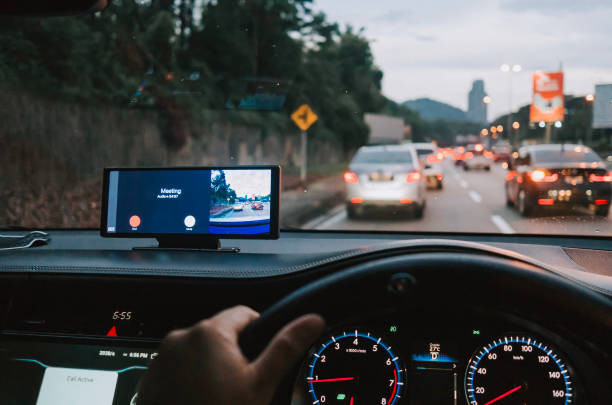Learn Why Signaling is Crucial Even at Low Speeds
When driving, signaling your intentions is one of the fundamental practices taught in drivers ed. However, many drivers underestimate the importance of signaling, especially when driving at low speeds. Signaling serves as a form of communication with other road users, ensuring they know what to expect. This clear communication enhances safety, as even at low speeds, unexpected movements can lead to accidents. Understanding the importance of signaling in every driving situation is crucial for all drivers.
The Importance of Signaling
Clear Communication
Signaling serves as a form of communication with other road users, ensuring that other drivers, cyclists, and pedestrians know what to expect when you are making a turn, changing lanes, or merging. This is particularly important at low speeds when you might be maneuvering in areas with high pedestrian activity or busy parking lots. By signaling your intentions, you help maintain order and prevent accidents in these areas. Proper signaling reduces the risk of misunderstandings and collisions, enhancing overall safety. Therefore, it’s crucial to always use your signals, regardless of your speed or the road conditions.
Enhancing Safety
Safety is the primary reason why signaling is so critical. Even at low speeds, unexpected movements can lead to accidents. For example, if you fail to signal before turning into a parking space, the driver behind you might not have enough time to react, leading to a rear-end collision. Similarly, cyclists and pedestrians rely on signals to judge when it is safe to cross the street or continue their path. By signaling your intentions, you help create a predictable driving environment that minimizes the risk of accidents and ensures the safety of everyone on the road.
Drivers Ed Teaches the Importance of Signaling
At Get Drivers Ed, we emphasize the importance of signaling in all driving conditions because it serves as a vital communication tool for drivers, cyclists, and pedestrians. Our comprehensive online drivers ed courses are designed to instill good habits in new drivers, ensuring they understand the importance of clear communication on the road. By emphasizing signaling, we help drivers anticipate the actions of others, which reduces the risk of accidents. We cover various scenarios, including low-speed situations like parking lots and residential areas, where signaling can prevent confusion and enhance safety. Our goal is to create confident, responsible drivers who prioritize safety and effective communication.
Situations Where Signaling is Crucial
Parking Lots
Parking lots are bustling with vehicles and pedestrians, so signaling your intentions when turning into a parking spot or reversing out can prevent confusion and potential accidents. Even at low speeds, clear signaling helps maintain order and safety by informing others of your actions. This simple act of communication can significantly reduce the risk of misunderstandings and collisions. Whether you are maneuvering in tight spaces or navigating through busy areas, using your signals is crucial for safe driving. Consistently signaling in parking lots demonstrates responsible driving habits and promotes a safer environment for everyone.
Residential Areas
In residential areas, the presence of children playing, pets running across the street, and people walking their dogs make it essential to signal every turn and stop. This vigilance is crucial for preventing accidents and ensuring the safety of all road users. Drivers ed courses often highlight the need for clear communication in these settings. By signaling, drivers can alert others to their intentions, reducing the risk of sudden maneuvers. Overall, consistent signaling helps maintain a safe and predictable traffic flow in residential neighborhoods.
Stop-and-Go Traffic
In heavy traffic conditions, where speeds are generally low, signaling before changing lanes or merging helps maintain a smooth flow of traffic. It allows other drivers to anticipate your actions and adjust accordingly.
Common Misconceptions About Signaling
"It's Not Necessary at Low Speeds"
Many drivers believe that signaling is only necessary at higher speeds or on busy highways. However, the reality is that signaling at low speeds is just as important. It provides other road users with crucial information about your intentions, reducing the likelihood of misunderstandings and accidents.
"Everyone Can See What I’m Doing"
Assuming that other drivers can predict your actions is a dangerous habit. Even if you believe your actions are obvious, signaling removes any doubt and ensures everyone is on the same page. This is a key principle taught in drivers ed programs, including those offered by Get Drivers Ed.
The Role of Get Drivers Ed in Promoting Safe Driving Practices
At Get Drivers Ed, our mission is to promote safe and responsible driving through comprehensive education. Our courses cover all aspects of safe driving practices, including the importance of signaling in every situation. By enrolling in our drivers ed program, you can gain the knowledge and skills needed to become a confident and responsible driver.
Conclusion
Signaling is a simple yet vital aspect of driving that should never be overlooked, regardless of the speed at which you are traveling. Clear communication on the road enhances safety for everyone, reducing the risk of accidents and misunderstandings.
Ready to improve your driving skills and learn more about the importance of signaling and other essential practices? Enroll in our online drivers ed course at Get Drivers Ed today. Gain the knowledge and confidence you need to drive safely and responsibly. Visit Get Drivers Ed to get started.


